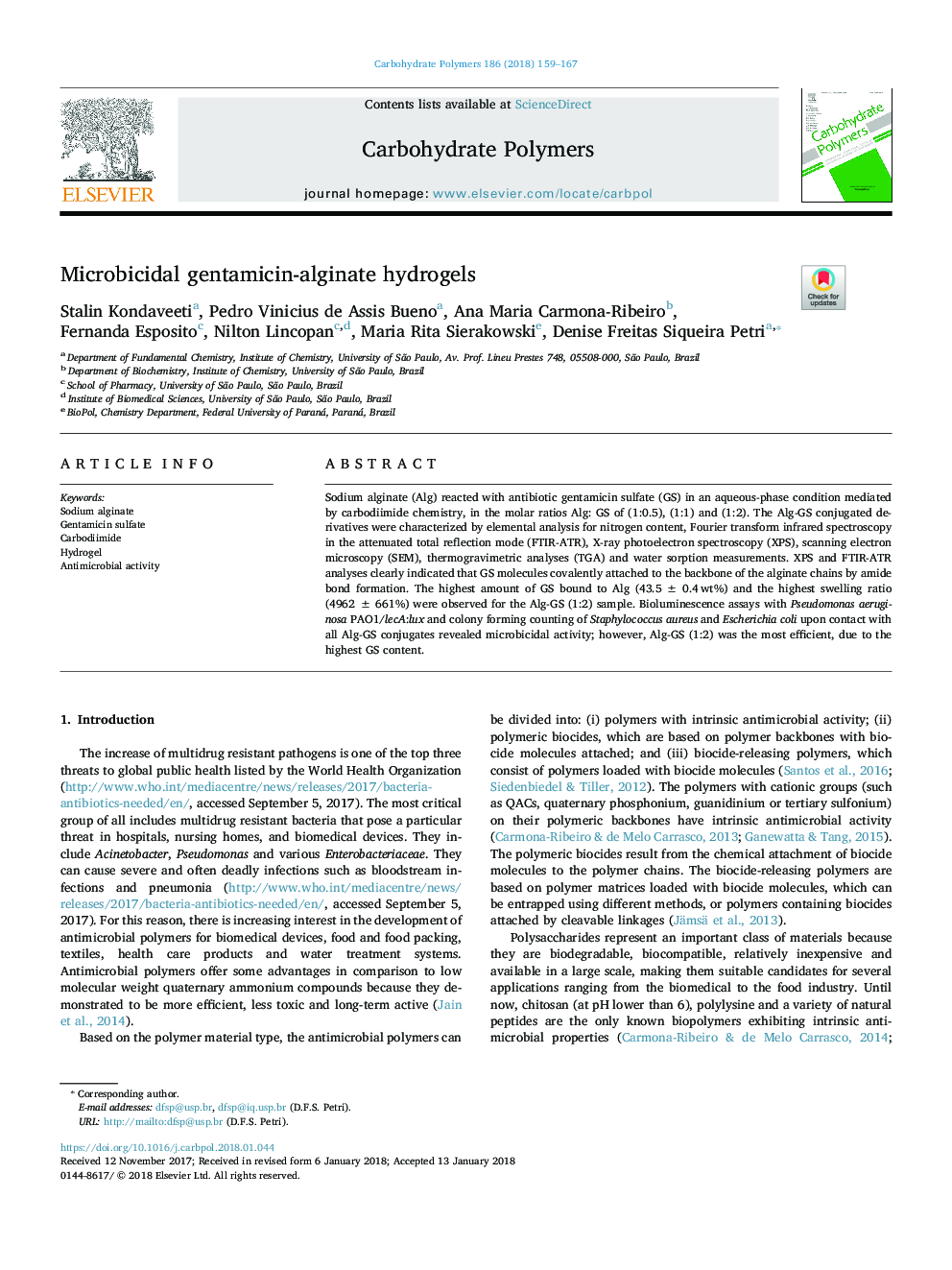| Article ID | Journal | Published Year | Pages | File Type |
|---|---|---|---|---|
| 7783584 | Carbohydrate Polymers | 2018 | 9 Pages |
Abstract
Sodium alginate (Alg) reacted with antibiotic gentamicin sulfate (GS) in an aqueous-phase condition mediated by carbodiimide chemistry, in the molar ratios Alg: GS of (1:0.5), (1:1) and (1:2). The Alg-GS conjugated derivatives were characterized by elemental analysis for nitrogen content, Fourier transform infrared spectroscopy in the attenuated total reflection mode (FTIR-ATR), X-ray photoelectron spectroscopy (XPS), scanning electron microscopy (SEM), thermogravimetric analyses (TGA) and water sorption measurements. XPS and FTIR-ATR analyses clearly indicated that GS molecules covalently attached to the backbone of the alginate chains by amide bond formation. The highest amount of GS bound to Alg (43.5â¯Â±â¯0.4â¯wt%) and the highest swelling ratio (4962â¯Â±â¯661%) were observed for the Alg-GS (1:2) sample. Bioluminescence assays with Pseudomonas aeruginosa PAO1/lecA:lux and colony forming counting of Staphylococcus aureus and Escherichia coli upon contact with all Alg-GS conjugates revealed microbicidal activity; however, Alg-GS (1:2) was the most efficient, due to the highest GS content.
Related Topics
Physical Sciences and Engineering
Chemistry
Organic Chemistry
Authors
Stalin Kondaveeti, Pedro Vinicius de Assis Bueno, Ana Maria Carmona-Ribeiro, Fernanda Esposito, Nilton Lincopan, Maria Rita Sierakowski, Denise Freitas Siqueira Petri,
